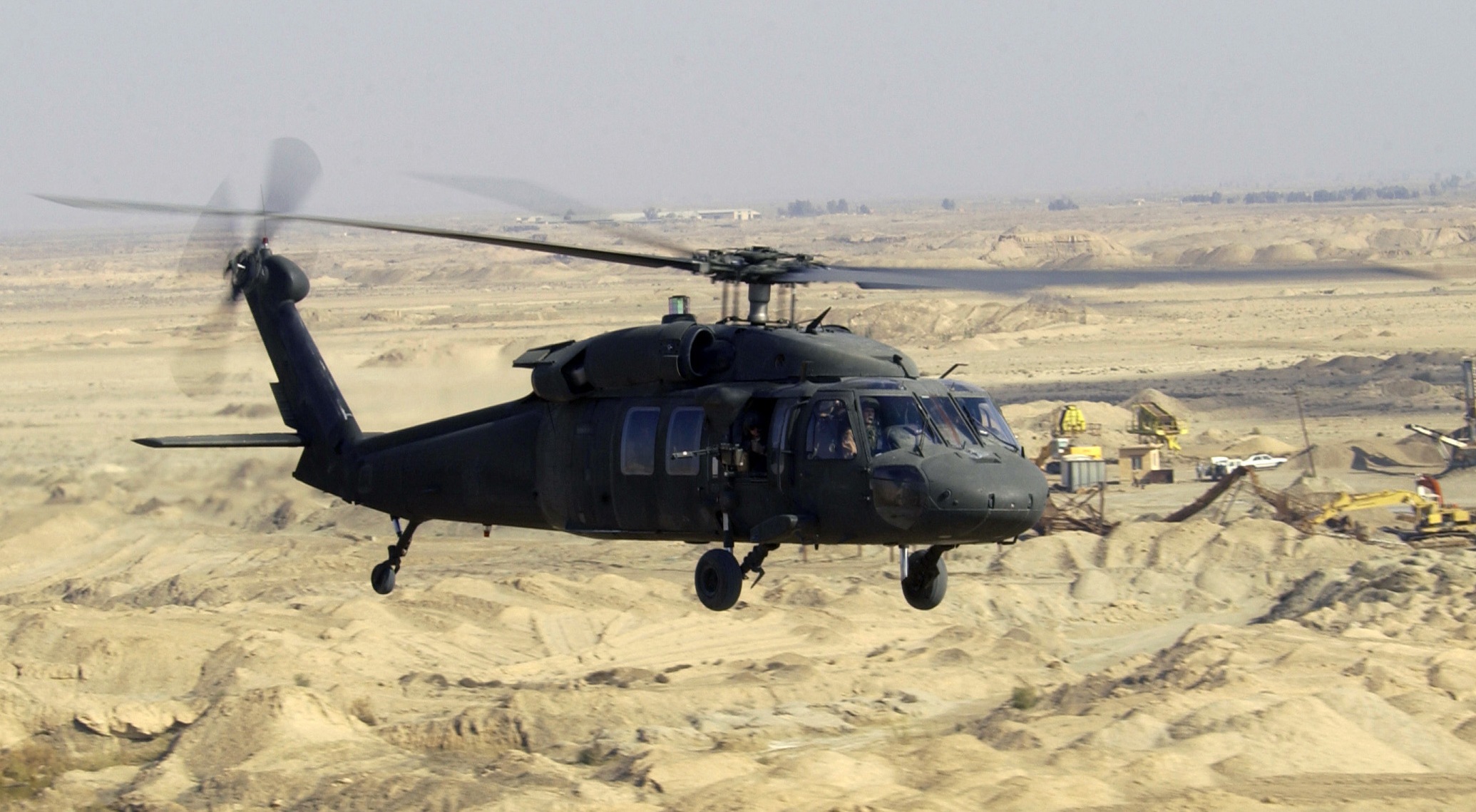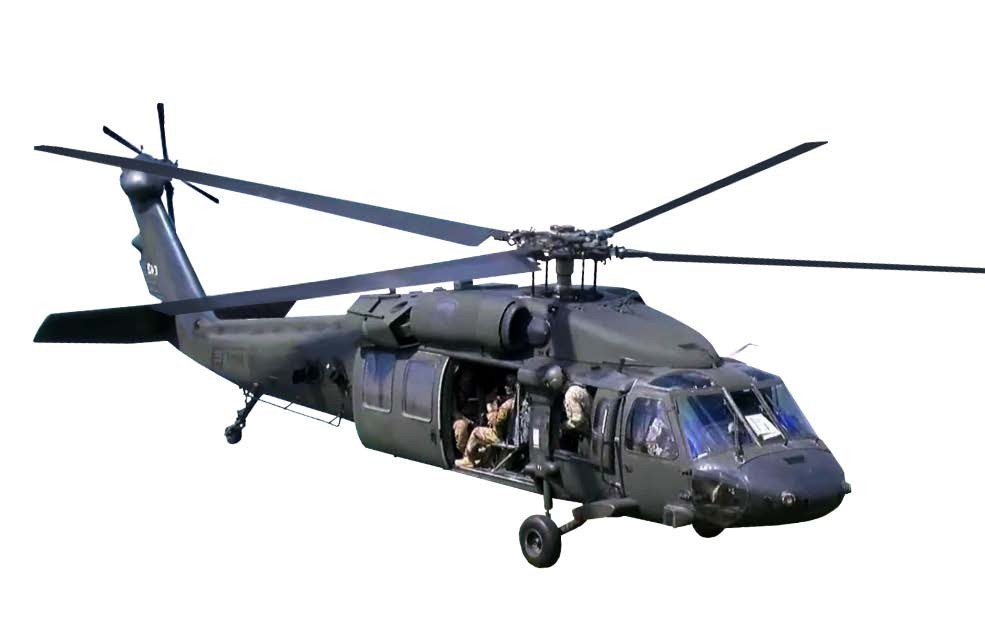Breaking Down the UH 60's Influence on Global Protection Approaches and Workflow
Breaking Down the UH 60's Influence on Global Protection Approaches and Workflow
Blog Article
UH-60: Developments in Modern Helicopter Layout
The UH-60 helicopter stands as a benchmark in modern-day aeronautics, showcasing substantial innovations in layout and technology that provide to the evolving demands of armed forces operations. As we discover the development and essential advancements of the UH-60, it comes to be vital to consider how these advancements influence not just current applications but also the future landscape of helicopter layout.

Evolution of the UH-60
The advancement of the UH-60 Black Hawk helicopter represents a substantial turning point in aerospace design and armed forces aeronautics. Introduced in the late 1970s, the UH-60 was designed by Sikorsky Airplane to satisfy the United States Military's need for a functional utility helicopter with the ability of executing a variety of goals. Its design stressed speed, maneuverability, and toughness, establishing brand-new requirements for functional performance.
The UH-60 features an unique four-blade blades system, which enhances lift and stability, enabling it to run successfully in varied atmospheres. Its airframe is created from advanced composite materials, adding to a reduction in weight while keeping architectural stability. The helicopter's layout additionally includes improved aerodynamics, which enhances gas efficiency and increases range.
Over the years, the Black Hawk has undertaken numerous upgrades to improve its capabilities, consisting of boosted engines, progressed trip control systems, and modular systems for simple upkeep and flexibility. The helicopter's capacity to perform missions varying from army transport to clinical evacuation has actually strengthened its function as a foundation of U.S. armed forces operations. The UH-60 Black Hawk remains a prime instance of how technology in helicopter design can considerably impact military performance and operational flexibility.
Advanced Avionics Solutions
Advancements in avionics systems have actually changed the abilities of modern helicopters like the UH-60 Black Hawk, boosting operational efficiency and situational recognition (UH 60). The combination of sophisticated avionics enables improved flight, navigation, and interaction administration, making the UH-60 a lot more versatile in diverse mission accounts
Among the essential functions is the sophisticated electronic cockpit, which employs multifunction screens that provide real-time information, making certain pilots have instant access to vital trip details. This streamlining of information decreases pilot work and boosts decision-making processes throughout complicated procedures. Additionally, the incorporation of general practitioner and inertial navigating systems enables accurate positioning and path preparation, enhancing objective implementation in tough atmospheres.
Furthermore, advanced avionics systems boost interaction capacities with safe data web links and voice communication systems, permitting smooth sychronisation with ground pressures and various other airplane. The assimilation of automatic flight control systems even more adds to enhanced security and control, particularly in negative weather or during low-altitude maneuvers.
Engine and Performance Enhancements
Engine efficiency in contemporary helicopters has actually taken a substantial leap ahead, driven by innovations that increase integrity, power, and effectiveness. The UH-60 Black Hawk, for instance, uses the T700-GE-701C engine, which includes a dual-channel, full-authority electronic engine control system.
In addition, the assimilation of engine health and wellness tracking systems permits for real-time diagnostics and predictive upkeep, considerably enhancing functional integrity. These systems not only sharp teams to potential issues before they end up being critical but likewise help with much more effective upkeep scheduling, thereby reducing downtime.

Products and Structural Innovations
Current growths in materials and architectural layout have revolutionized contemporary helicopter construction, boosting both efficiency and resilience. The introduction of advanced composite materials, such as carbon fiber strengthened polymers, has actually significantly lowered weight while maintaining architectural honesty. This shift not go to this website only improves fuel performance however likewise raises haul ability, permitting helicopters like the UH-60 to do more varied missions.
Additionally, technologies in light weight aluminum alloys and titanium parts have added to boosted resistance to deterioration and exhaustion, expanding the life expectancy of critical airframe components. The strategic usage of these materials has caused a decrease in upkeep requirements and improved total functional readiness.

Moreover, the combination of computer-aided style (CAD) and additive production innovations has actually allowed much more complicated geometries and light-weight frameworks, optimizing the wind resistant performance of helicopter layouts. These innovations help with fast prototyping and production, permitting suppliers to respond swiftly to advancing goal demands.
Safety And Security and Survivability Features
Safety and security and survivability features in contemporary helicopter design have actually become paramount, showing the enhancing demands for mission performance in challenging environments. The UH-60 Black Hawk, a remarkable instance, incorporates sophisticated modern technologies to boost team and passenger defense.
The helicopter additionally uses a ballistic security system, which consists of armored staff seats and crucial systems securing, decreasing vulnerability to tiny arms fire and shrapnel. Enhanced situational understanding is accomplished through advanced avionics and sensor modern technologies, allowing pilots to identify and prevent hazards successfully.
Moreover, the integration of redundancy in vital systems-- such as dual engines and numerous trip control channels-- makes certain continued procedure also if one system fails. The UH-60 is equipped with advanced emergency situation flotation protection devices, boosting survivability in water touchdowns. Jointly, these functions not just improve the safety of personnel but also boost objective success rates in aggressive settings, demonstrating the dedication to excellence in check my reference helicopter style.
Conclusion
The UH-60 helicopter represents a considerable innovation in modern aeronautics modern technology, incorporating cutting-edge products, sophisticated avionics, and durable safety and security look these up attributes. Its development reflects a commitment to boosting efficiency and functional performance while making certain pilot and team survivability. The combination of light-weight compounds and advanced navigating systems highlights the helicopter's versatility in different army objectives. Overall, the UH-60 works as a standard for future growths in helicopter design, personifying resilience and adaptability in modern army operations.
The UH-60 helicopter stands as a criteria in modern air travel, showcasing considerable advancements in style and innovation that provide to the advancing demands of armed forces procedures. As we discover the development and key technologies of the UH-60, it comes to be crucial to think about how these growths affect not only present applications however likewise the future landscape of helicopter design.
Presented in the late 1970s, the UH-60 was created by Sikorsky Airplane to meet the United States Army's demand for a flexible utility helicopter qualified of doing a variety of missions. The UH-60 Black Hawk continues to be a prime example of how development in helicopter style can significantly influence armed forces performance and operational versatility.
Overall, the UH-60 offers as a benchmark for future growths in helicopter design, symbolizing strength and flexibility in contemporary army operations.
Report this page